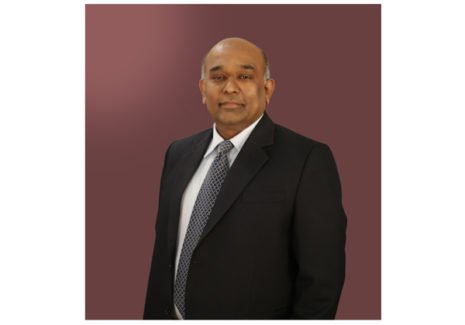India is the world’s fastest growing economy. Coupled with a middle class experiencing rise in income levels, the conditions are perfect for a healthy retail industry to flourish. Retail malls are the primary market makers in the organized segment of the retail industry. Unlike online retail portals, the malls give a clearer picture of the changing sentiment in consumer demands, preferences for products and services. Team Estrade had an exclusive opportunity to speak to Mukesh Kumar, Senior VP, Infiniti Malls. Following is a brief profile, followed by excerpts of the interaction.

About Mukesh Kumar, Senior VP, Infiniti Malls
Mukesh started his career with a start-up company as Management Trainee and moved up the ladder in a very short span of time. He was covered by a trade magazine for being the youngest Resort Manager at the age of just 25 years. His exposure with American Embassy as General Manager for their Recreation, F&B and Commissary division exposed him to the international community. His last assignment with the hospitality industry was as Vice President of Ramada Plaza Palm Grove, Mumbai.
He moved to retail division of the company formally in 2011. As Head of the division, he is responsible for handling the entire Operation, Leasing and Marketing of both Malls of K Raheja Constructions. The company owns and operates two Malls in Mumbai suburb one at Andheri (Infiniti Mall, Andheri) with built up area of 250,000 sq ft and second one at Malad (Infiniti Mall, Malad) having built up area of 1.20 million sq ft.
Mukesh Kumar is a graduate from a premier Hotel Management School and holds a degree in Arts with majors in Economics and English. He is also a Certified General Manager by Ramada International University, Geneva. He has been in the Service industry for almost three decades.
Tell us about Infiniti mall? About your products and services?
Infiniti Mall is a premier destination for shopping, entertainment and food in Mumbai. First established in 2004 at Andheri and second one at Malad in 2011, Infiniti Mall is part of Unique Estates Development Company Ltd., a division of K. Raheja Constructions. Established in 1956, the company is in the business of construction and property development for over 5 decades now, and has always enjoyed a great amount of trust and loyalty from its patrons over the years.
The group has successfully ventured into the areas of Housing & Real Estate, Hospitality, Finance and Retailing, to name a few, and the success it has achieved in each segment speaks about the technical, managerial, financial competence and the quality of manpower, it possesses.
Launched on 19th May 2011, Infiniti, Malad, Mumbai, spread across approximately 28,275 sq. mt. of land, is located at New Link Road, Malad (W). Infiniti Mall, Malad has total built up area of 12,00,000 sq. ft. consisting of a lower basement, an upper basement, a lower ground floor, an upper ground floor (podium level), first floor to third floor, a mezzanine floor within the third floor, fourth floor and a terrace above the fourth floor. This Mall caters to the needs of the prime catchment areas from Andheri to Borivali having approximate population around 3.5 to 4.5 million people. Whereas, Infiniti Mall, Andheri, is located at Oshiwara Link Road in Andheri (West) and is spread across 310,000 sq. ft. with 65 stores, a six-screen multiplex (PVR Icon), food court, family entertainment centre and restaurants besides shopping.
What is the size of the market you are currently competing in? In terms of footfalls, revenues, etc.
As per FICCI Report 2016, India has occupied a remarkable position in global retail rankings; the country has high market potential, low economic risk, and moderate political risk. India’s net retail sales are quite significant among emerging and developed nations; the country is ranked third (after China and Brazil). Overall, given its high growth potential, India compares favourably with global peers among foreign investors. With investment of around US $ 511.76 billion, the first half of 2016 witnessed the highest annual private equity (PE) in the retail sector, since 2008.
As far as Infiniti Mall market size is considered, it caters to Western Suburbs population. Considered as one of the best mall in the vicinity, with the largest area, and a large number of brands, Infiniti Mall has been seeing growing footfall at the rate of 10% YOY since its inception.
Has your business been affected by demonetization? In what way?
Indian retail industry generates lot of cash transactions and yes! there was certain impact on the sales for short span of time. Small traders and unorganised retail sector was affected more by demonetization than organized retail sector. Some segments like jewellery and the luxury segment had been impacted more than others and took much longer to revive. Though the malls had witnessed low footfalls during demonetization, the effect was temporary and it started gearing up to increase the numbers soon after currency circulated in the system.
The use of plastic money and online transactions continued to release the money to the retail market. Retailers encouraging alternative digital payment solution will bring more transparency and structuring to the retail eco system.
What is your marketing strategy? For attracting top retail brands to your malls.
Great location, excellent structural design and proper upkeep has always been appreciated by the retailers. We provide free branding space to the brands present in the mall thereby attracting more and more brands to be part of Infiniti.
Our key focus is to organize more socio-tainment events attracting large number of footfalls that could be finally translated to sales.
How have the malls changed the retail industry and the commercial property sector?
The greatest USP of Indian retail real estate sector is its touch and feel model, thereby attracting lot of national and international brands to come under one roof.
What are the implications of GST for you? Are there any changes you expect in the government’s GST policy for your industry?
Pertaining to products – likely rate of 18% as against the current effective rate of around 23%-24% on supply of goods, coupled with availability of input tax credit (which was not available earlier) should be beneficial to a trader and retailer. One is hopeful that benefits are transferred to the common man.
Dining out is likely to be more pocket friendly with restaurant services being treated as services in toto. Currently, it is treated as dual supply of goods and services under the current scheme, attracting cumulative levy of VAT and service Tax of around 20% to 24%.
As far as implementation of the GST is concerned, the onus lies on the Centre and states to ensure a smooth transition to the goods and services tax, which is the biggest indirect tax reform to create a unified market. Malaysia, which introduced GST two years ago, educated businesses and customers, but that did not suffice. India should be prepared better for the switch over to avoid any chaos. So, rules must be clear, and the tax administration well-equipped to handle GST. Ideally, the new levy should be rolled out three months after the publication of GST rules to make transition smooth for businesses.
How is changing technology, impacting malls? In terms of new technologies such as Big Data, Complex machines and AI.
Malls are using technology to transform mall usability as a means of improving customer satisfaction. There are many opportunities for malls to decrease customer pain points, while simultaneously creating entirely new delight points. Technology, for instance, can be used to address one of the biggest challenges shoppers face at the mall such as finding parking. Sensors located in parking spaces detect how many spots are available on each level and give visual indicators to drivers. Within the mall, shoppers could easily find and locate brands, shops etc. without any hassle through kiosk machines in today’s increasingly large and multi-level malls.
Which product/industry segment is the highest revenue earner for your company? Which brand has been retained for the longest time with Infiniti Malls?
Fashion, Footwear, Active wear and F&B are performing exceptionally well in the mall.
Which is your biggest mall in terms of size? Also, the biggest mall in terms of revenue?
It is Infiniti Mall, Malad, in terms of size as well as in terms of revenue.
What are your expectations from the Government?
Mall creates huge opportunity of an employment to the local population at all level and increase consumption which improves the GDP of the country. We are expecting incentives from the government to set up shopping centres.
We see malls set up by some very reputed Real Estate developers close down. What are the key variables required for the success of a mall? Clearly, location is not the only one.
There is phenomenal growth of shopping malls and speciality retail stores. Having said that, malls which are built well, maintained well, and are at the right location, with good brand mix will do exceptionally good. Whereas, mall without the said characteristics, are bound to suffer. Malls that can create a community experience will thrive. Malls need to reinvent themselves in order to keep abreast with the new era of entrants and to retain their existing patrons. The malls are increasingly following the current trend of social media and will be effectively utilizing the social media platforms and strategies to make it successful. Based on big regulatory or social and perceptual changes, malls across the country will keep transmuting to prevent themselves from being obsolete and match or exceed global standards.
In the next two years, what are the two trends that will define the future of your industry? What is the biggest challenge faced currently by the malls today?
The world of retail is being re-envisioned by emerging technology and changing customer behaviours. As shoppers are becoming more tech-savvy, the lines between online and brick-and-mortar shopping are blurring, resulting the retail world to adapt the development. Physical stores recognize that they have become virtual showrooms for online sales channels, and they are developing more effective responses to keep the sale. Stores of the future will tailor their omni-channel experiences to satisfy customers and boost sales. This also means the use of beacon technology to push offers and product suggestions to shoppers in-store.
More transactions will be conducted via mobile devices like smartphones and wearables, and the industry will see the emergence of new, more streamlined payment by 2020. Offline retailers will have the same tools available to them and will employ them widely. Whether it’s using analytics to map where people walk and what they pick up to better position products in the store or tracking shoppers at the device level to target promotions to them, data will be used to understand customers and increase sales. Absence of adequate good quality real estate space is one of the biggest problem being faced by the retailers. Poor infra structure also is big bottle neck for developers to set up malls outside the city.
What is your vision for Infiniti Malls, in the
- Near term future, over the rest of 2017
- To concentrate more & more on our marketing & customer service strategies so more events & promotions can give a push in terms of footfalls & Sales.
- Also, loyalty will be developed when we will be better customer focused.
- Long term, over the next 4 years or so
- Need to continue our best practices & will enhance our services to try offering infinite experiences to our customers under one roof.
“Onus for GST education lies on the Government” – Mukesh Kumar, Infiniti Malls






